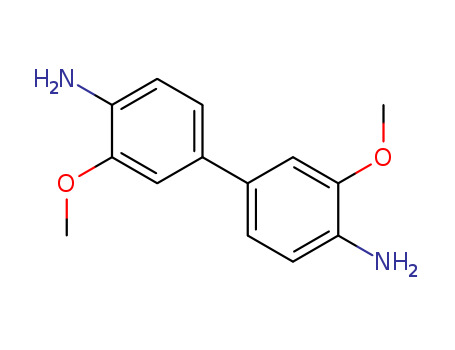- Chemical Name:3,3'-Dimethoxybenzidine
- CAS No.:119-90-4
- Deprecated CAS:59777-10-5
- Molecular Formula:C14H16N2O2
- Molecular Weight:244.293
- Hs Code.:29222990
- European Community (EC) Number:204-355-4
- ICSC Number:1582
- NSC Number:3168
- UN Number:2811,2431,3077
- UNII:MJY508JZXV
- DSSTox Substance ID:DTXSID3025091
- Nikkaji Number:J3.253K
- Wikipedia:O-Dianisidine
- Wikidata:Q222968
- NCI Thesaurus Code:C44365
- ChEMBL ID:CHEMBL398363
- Mol file:119-90-4.mol
Synonyms:3,3' Dimethoxybenzidine;3,3'-Dimethoxybenzidine;Dianisidine;Dianisidine Dihydrochloride;Dianisidine Hydrochloride;Dianisidine Sulfate;Dihydrochloride, Dianisidine;Hydrochloride, Dianisidine;O Dianisidine;O-Dianisidine;Sulfate, Dianisidine



 T
T


